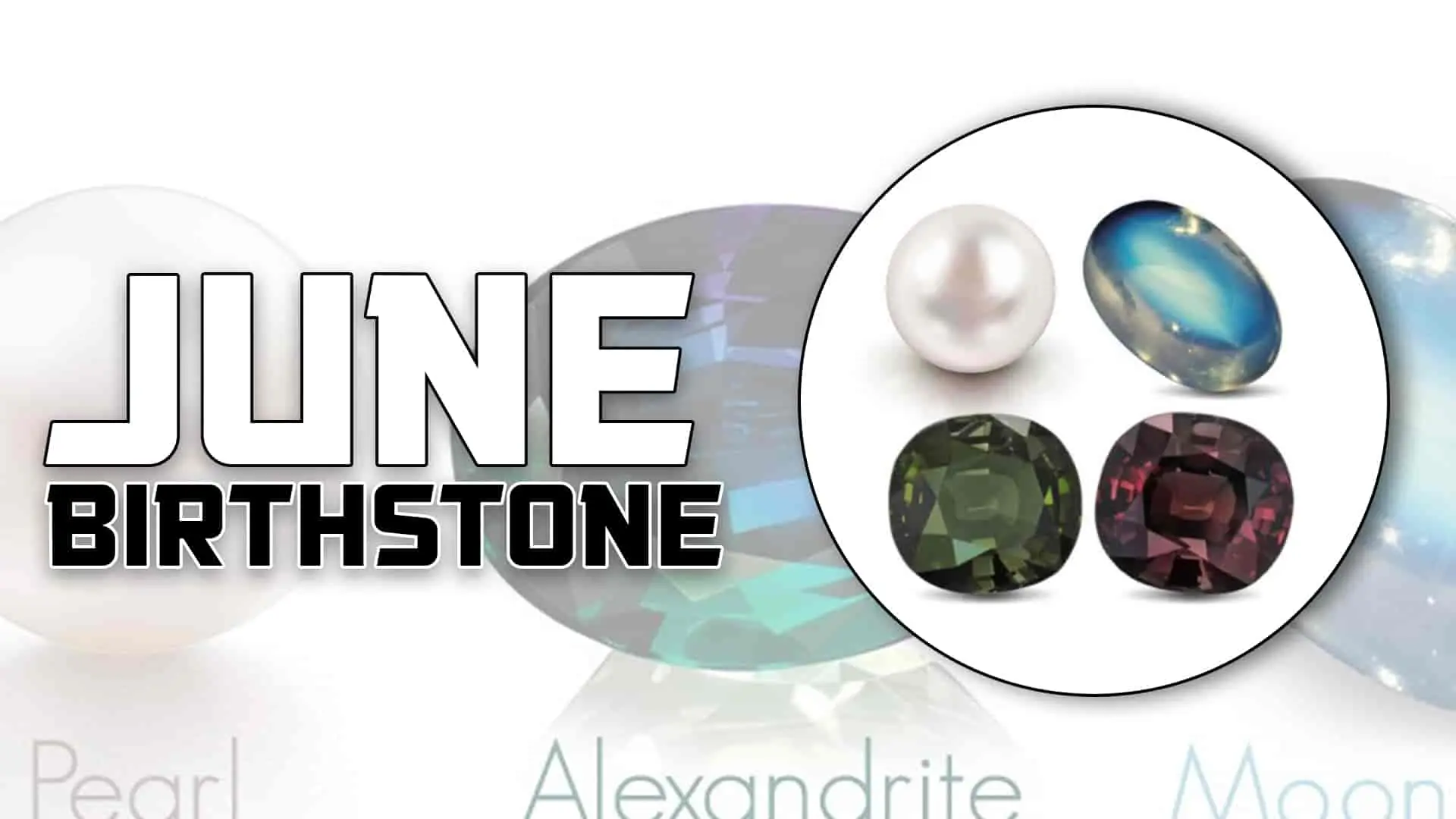Welcome to the world where three gemstones serve as the birthstones for the month of June and have a particular place. The beautiful pearl with mesmerizing grace and purity is the ancient birthstone of June. However, Alexandrite is a beautiful gemstone with changed colors and flexibility. On the other hand, the modern gemstone is a moonstone with calming effects and magical features.
Stay with us to explore the magical world of these three gemstones for June and explain their meaning, characteristics and history. We will explore different variations of June birthstone in detail. We will get to know about each of these three variations in detail. Let’s move ahead to know about all of these June birthstone variations in the market. All of these stones are useful for different date births that provide different compositions and properties.
June Birthstone: Pearl
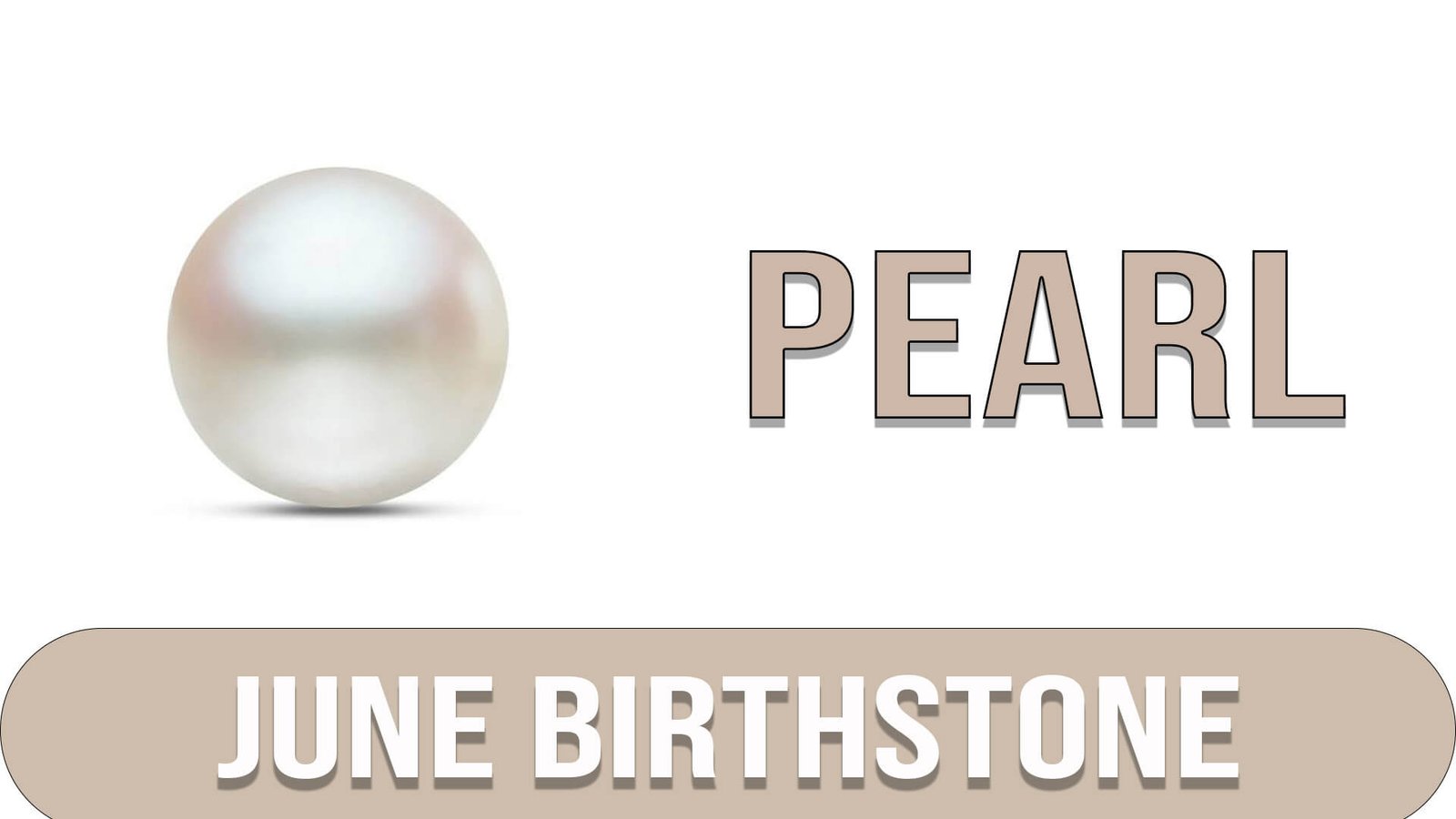
A pearl is the birthstone of June and is made with soft tissues of mollusks such as mussels and oysters. After penetration of sand grain in the mollusks, there is the formation of nacre, which is then deposited in the layers around the sand grain and forms a pearl. This gemstone is available in different shapes, colours and sizes, such as white, cream, pink, grey and black.
Due to its shiny exterior, softness, elegance and purity, this gemstone is famous. Pearls are timeless birthstones due to their high value, rich history, and use in Jewelry. Unlike the other variations found in the market these pearls have strong demand in the entire industry.
History of Pearls Birthstone
Pearls have a rich history over thousands of years. In 4200 BC, the earliest pearl was discovered in ancient Mesopotamia and at that time, this gemstone had more value. In ancient China, pearls were used as the source of wealth and royalty. Chinese of 3rd century AD said that pearls are beautiful and symbolise harmony and perfection.
In ancient Egypt, pearls were considered to have magical properties, and they were used in Jewelry and buried. In ancient Rome, pearls symbolised social status and luxury. According to Julius Caesar, pearls were only restricted to the ruling classes. In the Middle Ages, pearls were demanded by European nobility, and they used to add this gemstone to crowns, royal jewellery and artefacts.
Pearl oysters were discovered in America in the Gulf of California and the water of South and Central America, which then increased in demand during the Spanish colonisation. In the 19th century, there was a rise in cultured pearls because of Koki chi Mikimoto, and these pearls are easy to access and affordable. In the 20th century, pearls had a major significance due to elegance and simplicity. Coco Chanel added this pearl to her designs. In today’s world, pearls are famous for their timeless beauty and classic charm, purity, femininity, and enhancement.
Where is Pearl Found?
The warm waves with blue skies and beautiful surroundings are the indicators of the presence of pearl birthstones. Though mollusks that are the source of pearls are not present in contaminated water, pearl farms are present in stunning landscapes.
The pearls present in the saltwater are produced all over the world. However, some cultured pearl farms are present in Japan and China, mainly on the southern shores of Guangxi and Guangdong. Different operations have been done for culture pearls from the northern coast of Australia to Indonesia and the southern coast. However, black Tahitian pearls are present in two areas: Gambier Island and the Tuamotu Archipelago. The major pearl supplier is found in China, and you can find the June 7 birthstones easily anywhere around the world.
Meaning of Pearl
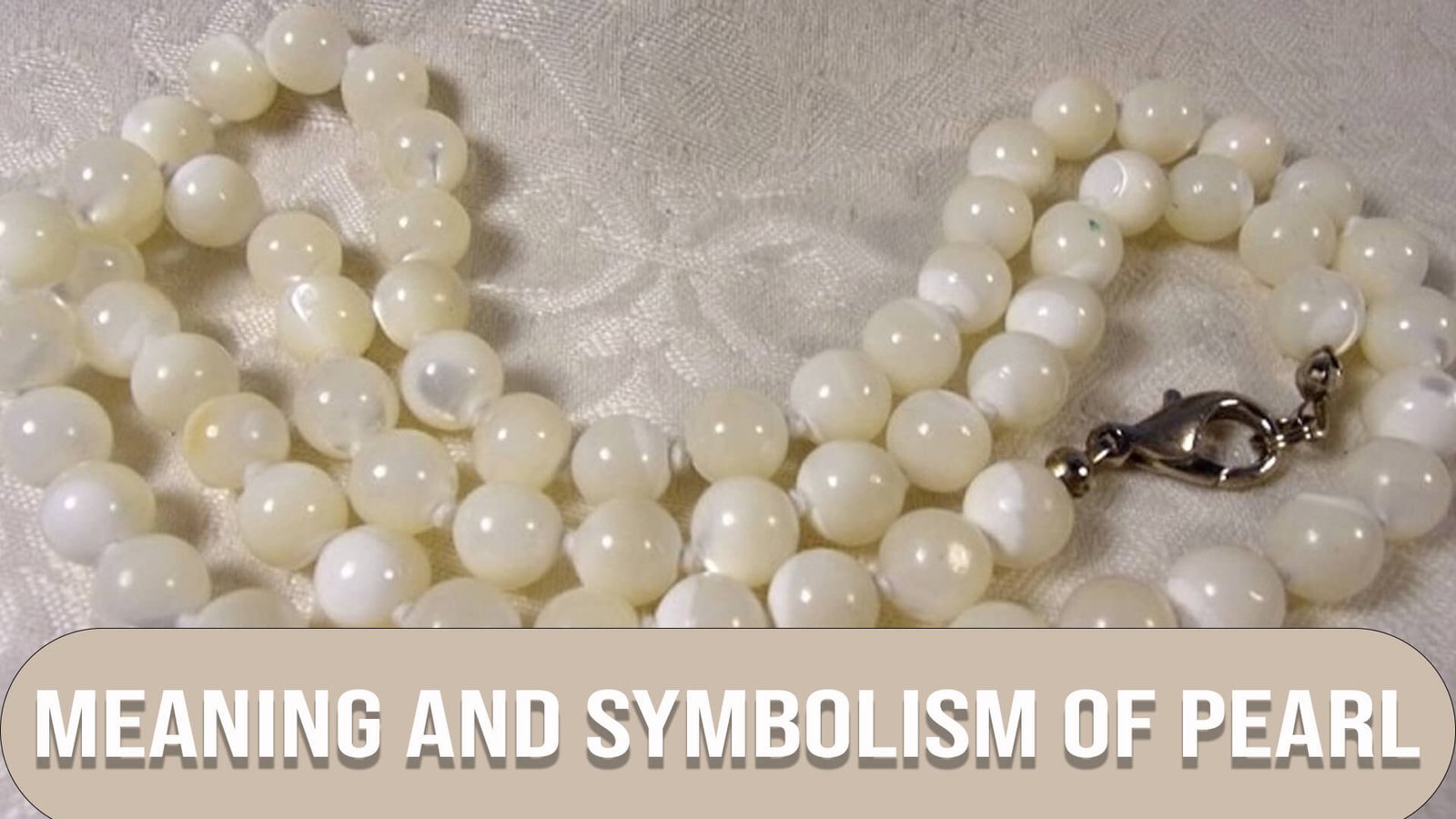
The pearl holds significant symbolism and historical importance. Being one of the oldest gemstones, it embodies purity, softness, and beauty. Its smooth surface symbolizes perfection and captures the essence of beauty. Throughout history, pearls have been revered and cherished for their timeless appeal, making them a symbol of grace and elegance. As a result, pearls continue to be sought after for their inherent symbolism and intrinsic beauty, making them a timeless and classic choice for Jewellery and adornment. Pearl has a deep meaning and is a symbol that embraces history. As pearls are among the old gemstones, they are pure, soft, and beautiful. Due to the smooth surface, pearls ensure perfection and beauty.
You can even find many other types, and the color variation is pearl stone. An irritant such as a parasite or sand grain is the root cause of the formation of a pearl. After entering the mollusks, the sand grain creates the nacre layer which is the crystal substance and it coats the sand grain which then forms a pearl. This is the natural process which is transformed and gives rise to personal symbolism. Pearls are used to overcome adversity and serve as the symbol of maturity, resilience and wisdom.
Symbolism of Pearl
In different cultures and traditions, pearls intrigue jewelers and are famous as a symbol of luxury and wealth. In ancient Rome, this stone served as social status, wealth and power. However, in Eastern cultures, this stone was connected with spirituality and inner peace.
Pearls also have a deep connection with love, fertility and marriage. Commonly, this gemstone is added to the bridal Jewellery, which symbolizes the start of a new chapter of life. Pearls also enhance balance, strength and harmony among love and relationships.
This gemstone also provides calming effects, balances emotions, enhances creativity and tranquillity. Wearing pearls can connect you with sea and moon energy which enhance health and calming powers. It is summarised that pearls are the symbol of purity, wisdom, love, wealth and spirituality. Also this gem can attract the hearts of many people due to its rich history, significance and symbolism.
Properties of Pearl
Due to unique physical features of iridescent pearls, these assure eternal appeal. Pearl are the organic stones that are formed in the soft tissues of mollusks. With the nacre surface that is shiny and smooth, these assure the unique lustre. Round pearls are costly and valuable among all other types of pearls such as irregular and oval.
Pearls are available in different colors such as white, cream, pink, grey and black. The hardness of pearls is 2.5 to 4.5 and are at high risk of scratching and need proper handling. Pearls are light compared to other stones because of gravity ranging from 2.70 to 2.78. They even have different designs that are derived from sea or other riverside areas. However they are more expensive than the original pearls found in the market.
Color of Pearl
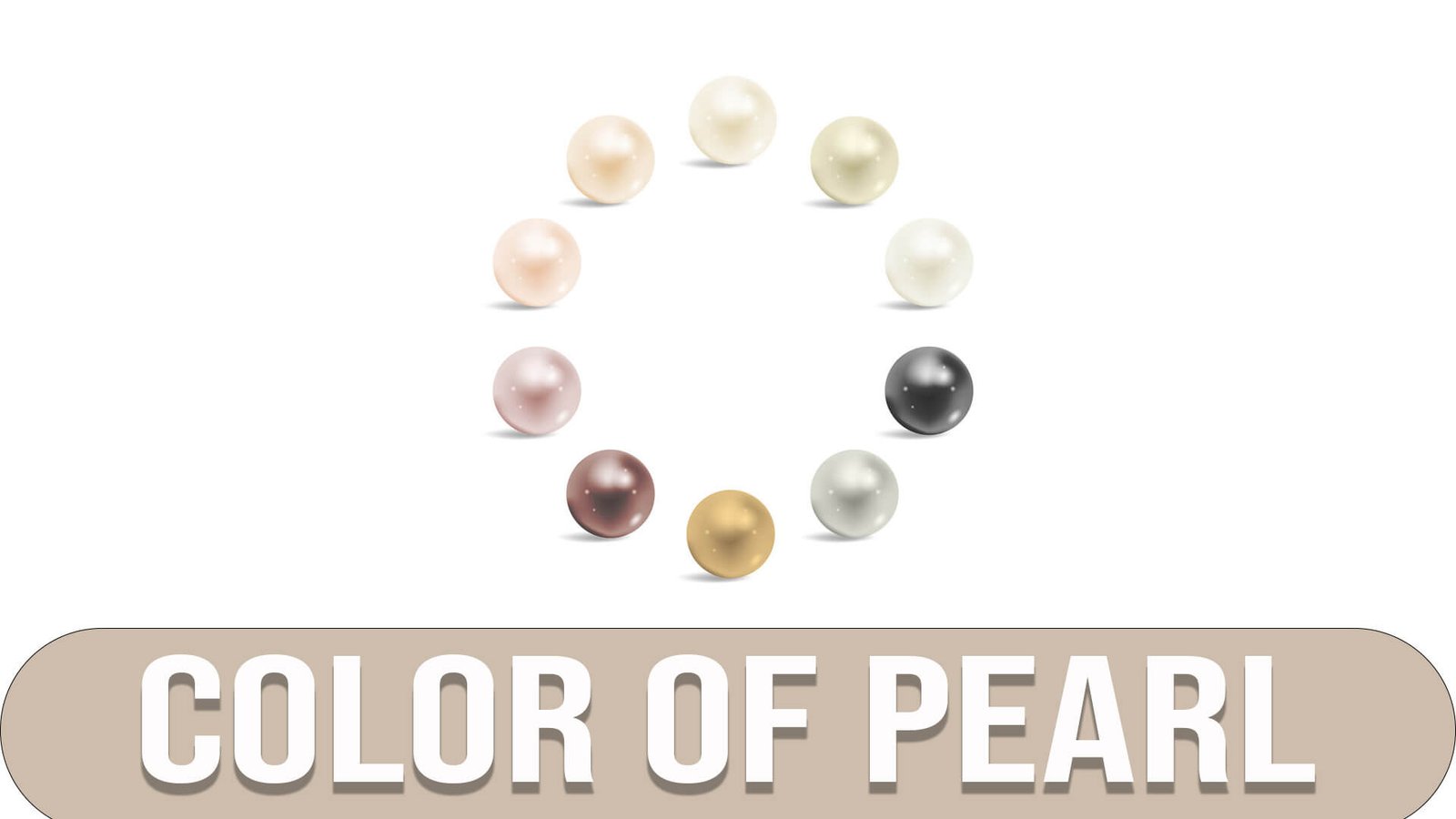
June birthstone color of Pearls are captivating gemstones known for their alluring colors and distinct charm. Their lustrous shine and soft elegance have made them a sought-after choice for Jewellery and accessories. From radiant white to creamy hues, delicate pink to mysterious grey and black, pearls are available in a variety of shades, each exuding a unique sense of sophistication and grace.
As the first gemstone, pearls hold a special significance and have been cherished for centuries for their timeless beauty. Whether adorning a necklace, earrings, or bracelet, pearls never fail to make a statement and add an aura of refinement to any ensemble. Their classic appeal and versatile nature have solidified their status as a beloved gemstone, perfect for adding a touch of elegance to any occasion.
Pearl Jewelry
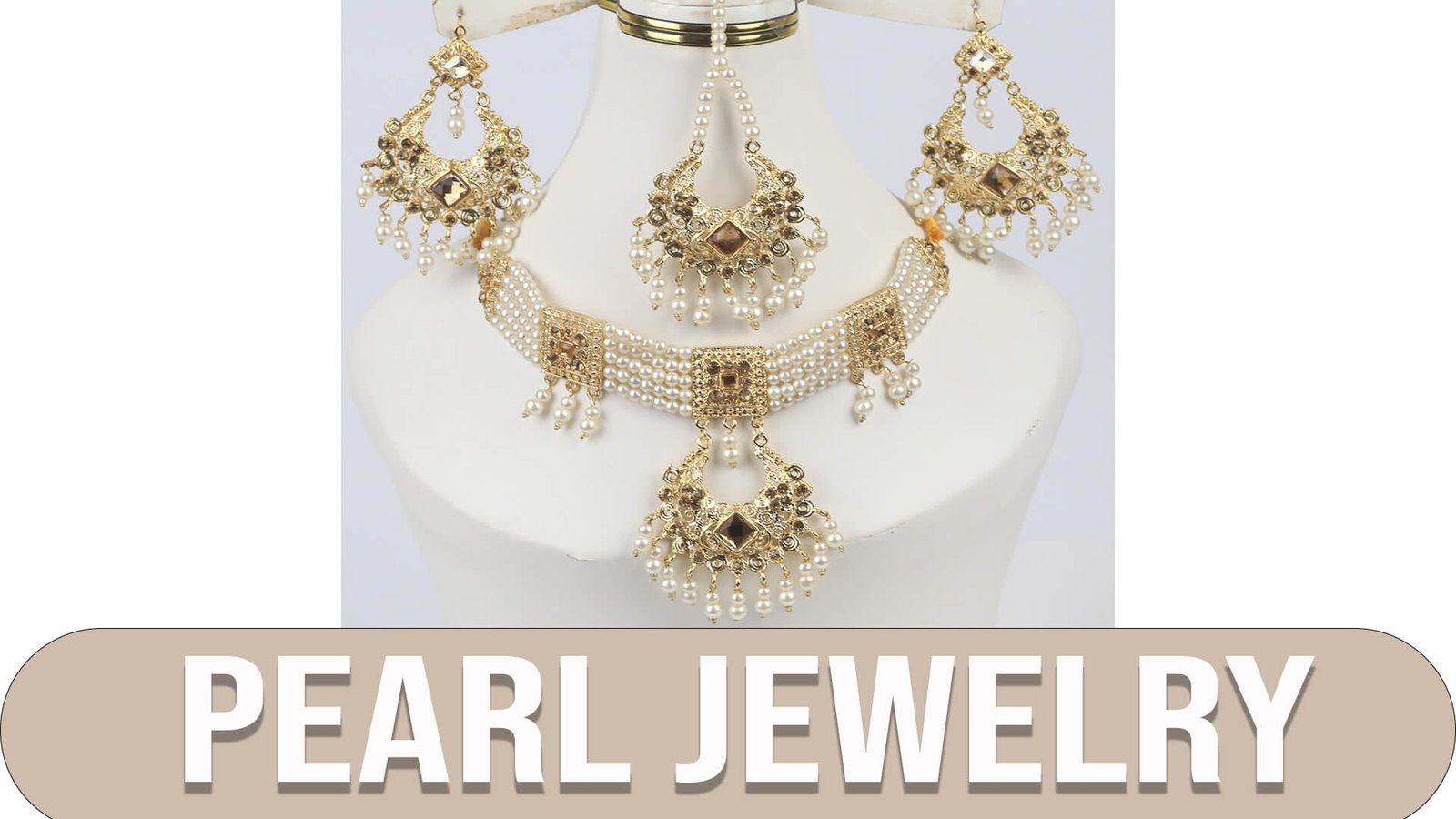
Pearls are the best option for creating beautiful Jewellery as natural pearls are rare and difficult to find in the market without spending more money. However genuine pearls are not round but are slightly off around because of the natural environment. Having natural but spherical pearls is the demand of every one. Pearls are used in the earrings, rings, necklaces, bracelets, pendants and pins.
Pearl Care and Cleaning
Pearls are delicate gemstones that need special care to maintain their lustre and avoid damage. June birthstone meaning depends on the outlook which reflects majorly in pearl stone variations. Due to their soft nature, they can easily scratch when they come into contact with other gemstones or hard surfaces, so it’s important to store them separately from other jewellery pieces. Avoid storing pearls in plastic bags because certain chemicals in plastic can harm the surface of the pearls.
Additionally, it’s best to refrain from wearing pearl jewellery while using hair products, perfumes, and cosmetics, as these incredible substances can have adverse effects on the pearls. To keep your pearls clean, use a soft cloth to gently wipe them after each wear, which will remove any accumulated oils or residues. With proper care, your pearl jewellery will remain beautiful for years to come.
Cost of Pearls
The price of a pearl may vary based on the kind, size, quality and appearance. Natural pearls are rare and costly, costing thousands to millions of dollars. Based on the type and quality, cultured pearls come in the average range of $50-$500 per strand. However, the least costly pearl is imitation, which costs a few tens of dollars per strand. Some other factors, such as seller repute and market conditions, affect the price. Be sure to consult the jeweller to know the exact price of the pearl.
June Birthstone: Alexandrite
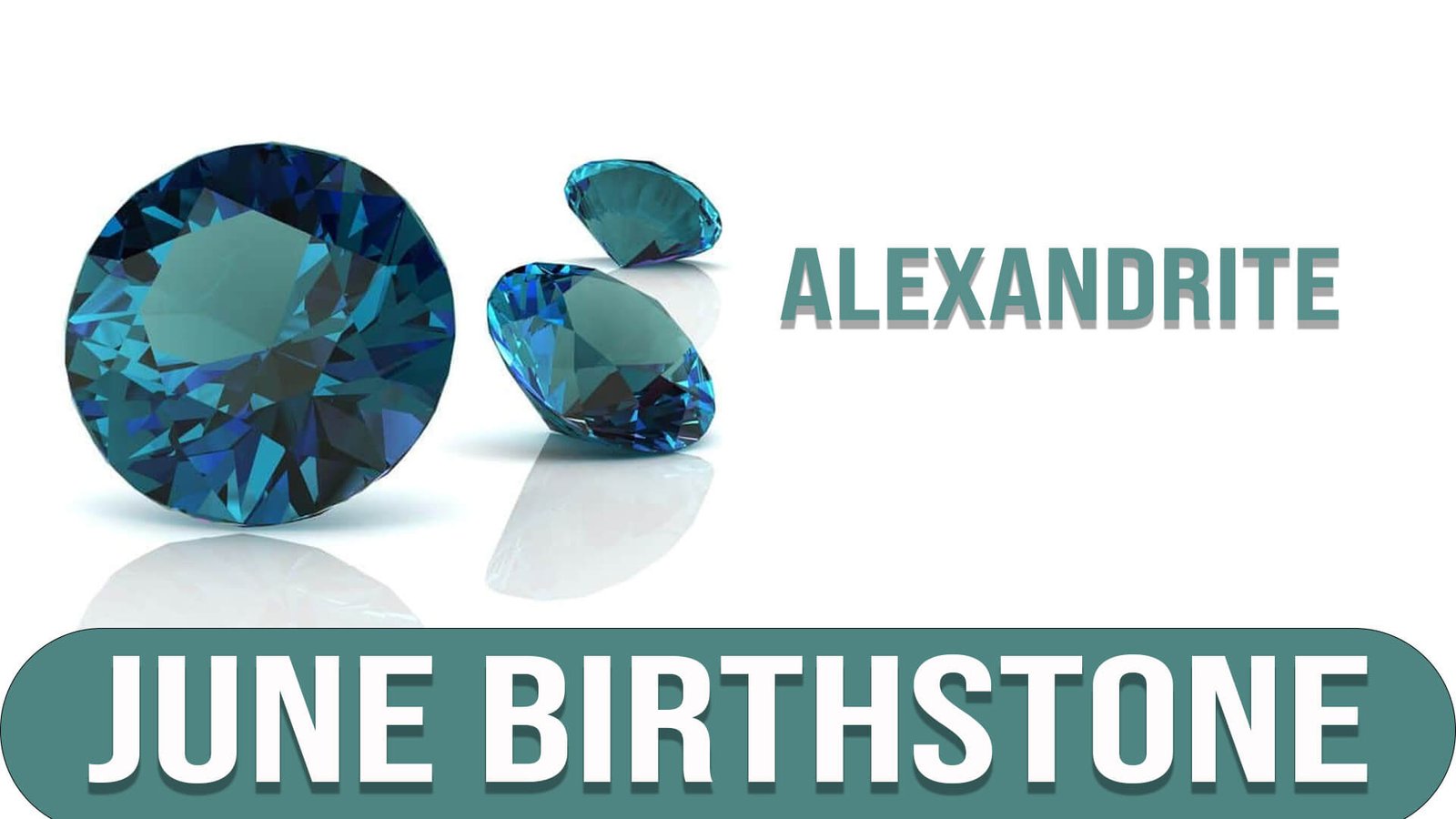
Alexandrite is an appealing and uncommon stone and is famous because of its high capacity to change colour. This gemstone belongs to the family chrysoberyl and is known for its ability to change colours under light. Commonly this gemstone has green or bluish green colour under light or daytime.
However when you see Alexandrite in candle light, you can see the colour transformation of crimson and purplish red hue. Pleochroism is the best colour change that differentiate Alexandrite from other stones and enhance its appeal. As alexandrite meaning is rare so it has high price and is linked to happiness and flexibility. High quality and natural Alexandrite are rare and valuable among gemstone lovers and collectors.
History of Alexandrite
In 1834, this gemstone was found for the first time in the Ural mountains of Russia. The name of this gemstone was given after the Russian tsar Alexander II.
At first, this gemstone was thought to be emerald because of its green color. However the color changing feature of this stone makes it distinguished. In Russia, this gemstone was famous and considered as the national gemstone because of its rarity and beautiful color changing nature.
In the 20th century, the alexandrite color deposits were seen in Sri Lanka, then in Brazil, Tanzania and many other countries. Due to many sources, Alexandrite is available in the market. The fame of Alexandrite has been increased in the art Nouveau and Edwardian eras. Due to the unique color changing feature, jewellers prefer this stone and add the tough of elegance in jewellery.
The Russian era, there was less supply of Alexandrite which made it more valuable among collectors. In the technological advanced era, the synthetic creation of this gemstone was done with the same chemical composition and color changing features as in natural gemstone.
In today’s world, this gemstone has high value and is among the rarest gemstones. Due to fine quality from Russia, this gemstone has premium pricing in the industry. Also the color changing feature that changes the color from green to red to purplish red enhances the rarity, elegance and luxury.
Where is Alexandrite Found?
The Ural mountain deposits, which were once the primary source of Alexandrite, have been depleted due to extensive mining. Presently, Sri Lanka, Brazil, and East Africa are the main suppliers of Alexandrite. While some high-quality stones can still be found in the current mining areas, others may have a muddy colour. A few of these stones exhibit the exact colour-changing properties that made Russian Alexandrite famous in the 19th century.
Alexandrite is highly regarded as one of the most expensive and rare colourful gemstones, especially in larger sizes. The scarcity and exceptional colour-changing abilities make it a highly sought-after gemstone for collectors and jewellery enthusiasts. With its fascinating history and rarity, Alexandrite continues to captivate gemstone lovers and collectors around the world.
Meaning and Symbolism of Alexandrite

Alexandrite is the birthstone of the month of June because of its rarity, deep meaning and symbolism. Due to color-changing features, this gemstone is highly prized and famous among collectors. This feature also symbolizes duality and balance from green shades in daylight to red and purple shades in incandescent light. Also, this transforming phenomenon is a symbol of change and encourages the person to go through life’s transitions, which also reminds us of the contrasting situations.
Moreover Alexandrite June birthstone meaning is famous for creativity, spirituality and intuitions. This gemstone can reflect colors based on the source of light that also reflect the truth of oneself and nature of human experience. Wearing this stone helps people to explore their emotions, boost understanding and consciousness about the world.
According to some cultures, this gemstone symbolizes better luck and prosperity. This stone attracts success and prevents negative energies. As well as it is luxurious and elegant due to beauty and rarity. Moreover Alexandrite has a strong link with romance and love. The dual nature of this stone keeps balance between feminine and masculine powers so it boosts unity and harmony. Also it can boost emotional bonds, passion and bring happiness.
It is concluded that Alexandrite is the famous gemstone that assures balance, adaptability, better luck, happiness and spirituality. Due to this appealing gemstone, we can remind of nature changing and how these transformations are resilient and graceful. The beauty and rarity of this gemstone enhances personal and emotional growth for people born in june.
Properties of Alexandrite
Alexandrite is considered as the most beautiful and rare gemstone due to its unique properties and attractiveness. Due to the excellent capacity of color, changing from green to blue in daytime and red to purple in incandescent light make it more appealing. Pleochroism is the process of distinguishing Alexandrite and attracting the attention of people.
This gemstone has transparent and translucent properties with a glassy lustre. On the Mohs hardness scale, it has a hardness of 8.5 so this durable stone is used in many applications. Also this stone can absorb light waves and the chromium can change colours. It is highly valuable among collectors and gemstone lovers because of its color changing features.
Color of Alexandrite
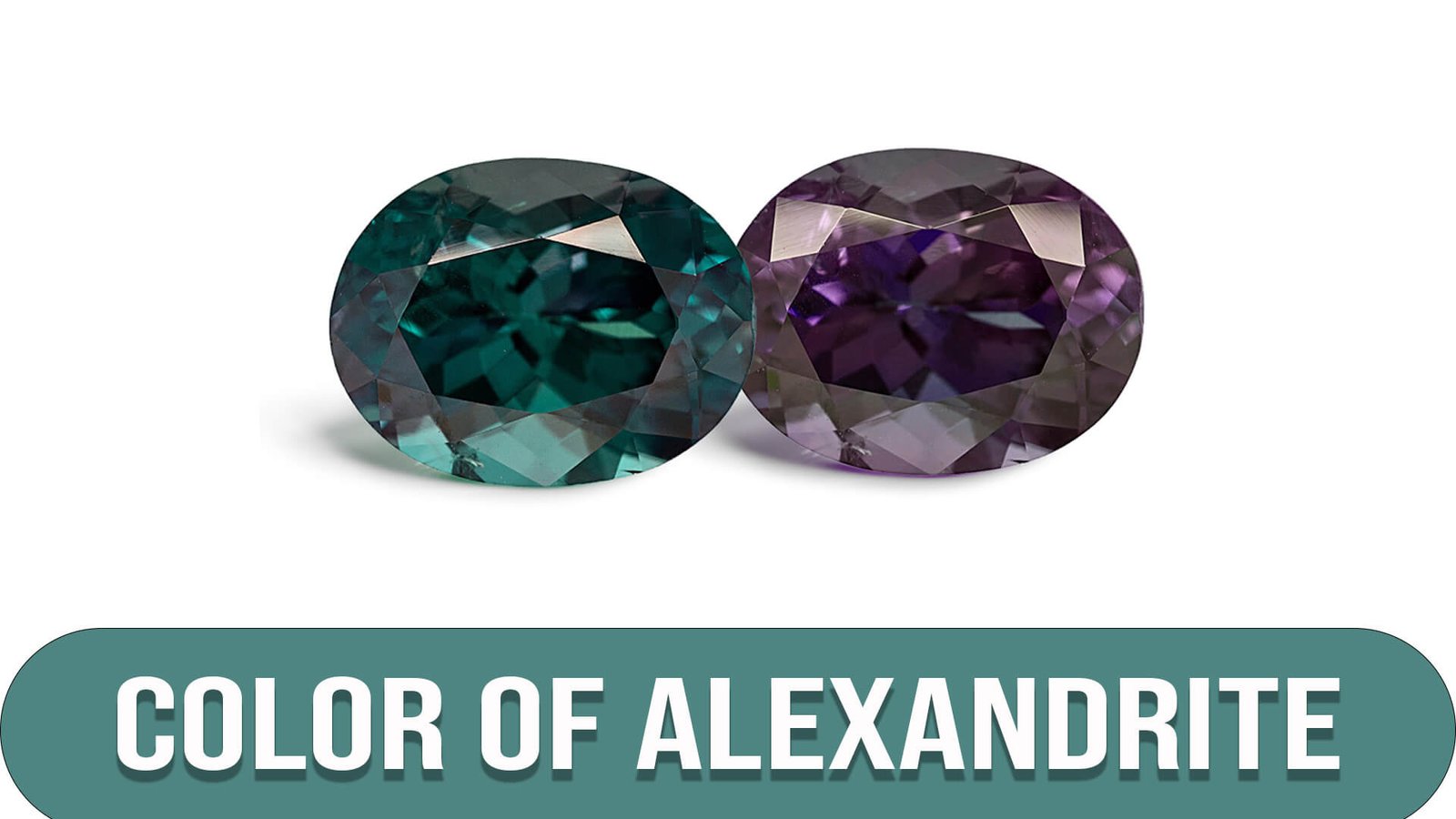
The birthstone for June, Alexandrite, is differentiated by its remarkable color-changing ability, known as pleochroism. June birthstone color means that the gemstone exhibits different colors depending on the type of lighting it’s exposed to. In natural daylight, Alexandrite appears as a beautiful greenish-blue hue, but when placed under incandescent light, it undergoes a fascinating transformation, taking on a reddish-purple shade.
This unique characteristic creates a captivating visual display that is both rare and alluring. The gem’s ability to change color under different light sources makes it highly sought after and adds to its allure. With its enchanting color transformations, Alexandrite continues to capture the admiration of all who have the pleasure of beholding its distinct and mesmerising beauty.
Alexandrite Jewelry

Alexandrite is a rare and uncommon stone weighing less than 3 carats. Due to its rarity, the stone’s owner usually requests customised Jewelry as opposed to ready-to-wear pieces. Unlike Alexandrite, which means it is not commonly used in ready-to-wear Jewelry, it is highly sought after and used in the crafting of various jewelry pieces, including earrings, rings, necklaces, bracelets, stick pins, and pendants.
Its unique color-changing properties, from green in daylight to purplish-red under incandescent light, make it a coveted gemstone among collectors and jewelry enthusiasts. The ability to change color adds to its allure and makes it a fascinating choice for those seeking a truly distinctive and rare piece of Jewelry.
Alexandrite Care and Cleaning
Alexandrite doesn’t have cleavage, which may be damaged under stress. So, it is considered the best option for rings and other Jewelry that is worn on a regular basis. For the baby born in June, the best gift is the alexandrite engagement ring. Use warm water with a soft brush and mild soap to clean your gemstone. Steam and ultrasonic can also be used for cleaning.
Cost of Alexandrite
Alexandrite is a rare and costly stone due to its capacity to change color. The average cost of this gemstone may vary based on the quality, color, clarity, size and origin. However, the average cost of this stone for low quality and small size starts at $1,200 per carat. However, the high-quality stones with more clarity, dynamic color change and large sizes come at an average cost of $5,000 to $15,000 per carat. At the same time, the larger and premium gemstones are available at a cost of $20,000 per carat.
As Alexandrite is rare and demanding so it has more cost than other stones. For current and updated information regarding pricing, you should consult the jeweler.
June Birthstone: Moonstone
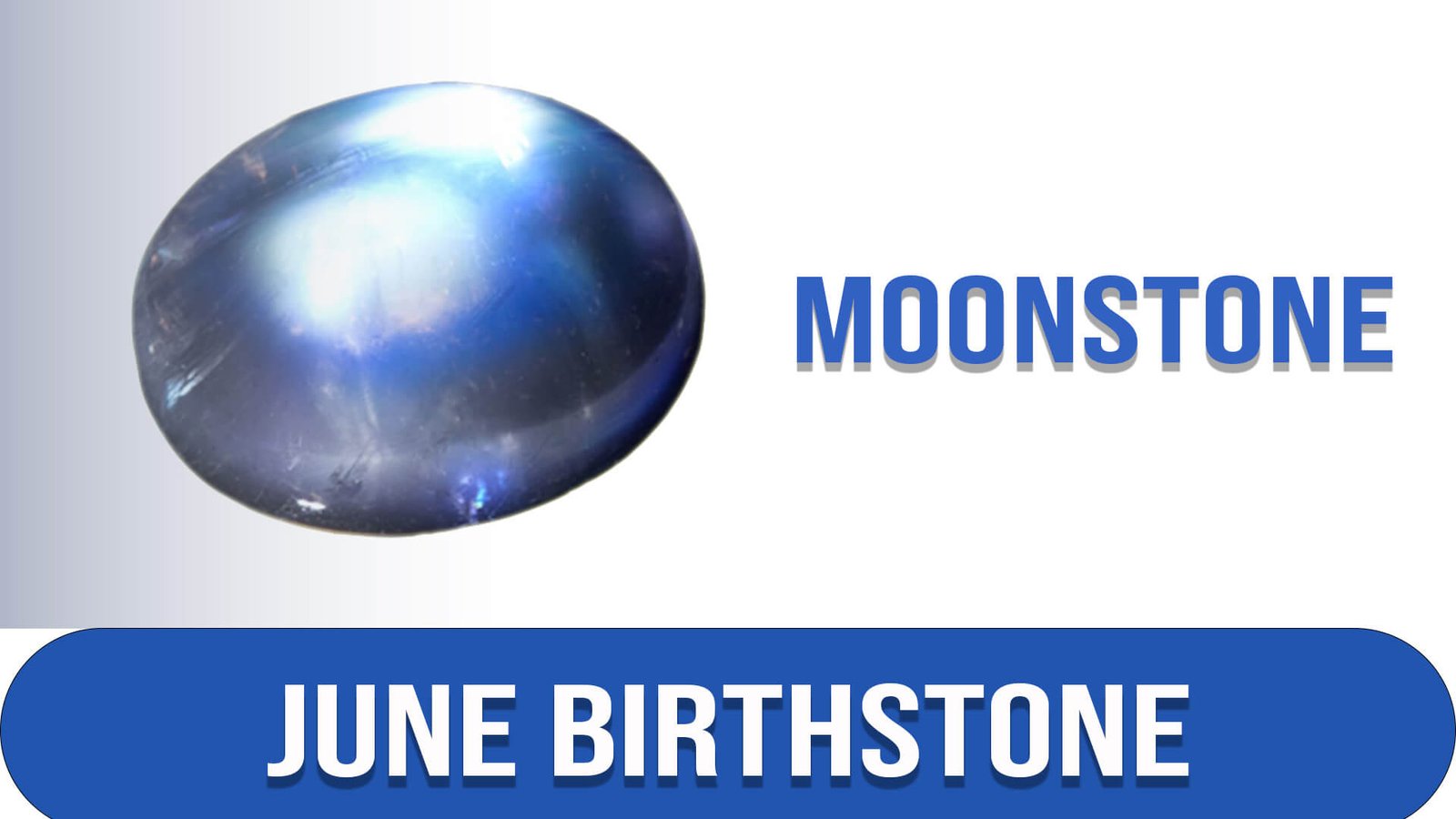
The charming June 5 birthstone moonstone is famous for ethereal beauty and attractive lights. This belongs to feldspar and is famous for adularescence which is the dance of lightning to give a shiny look to stone surface. Moonstone refers to the fact that the stone has a resemblance to the radiant glow of the moon.
This stone is also available in peach, grey and blue color while it is also in milky white and transparent colors. It has a strong link to intuitions, emotional stability and feminine powers. Moonstone also boosts spirituality, inner balance and harmony. In history, this stone has been valued and used in decorative pieces. Due to its unique charm, this stone attracts the attention of people.
History of Moonstone
June birthstone moonstone has a rich history about thousands years back and has been prized in many cultures. In ancient Romans, this stone was believed to be created from moonlight and give the magical glow. In ancient India, the stone was regarded as having the connection with the moon God Chandra. According to people this stone brings luck, love and protection.
Moonstones were added to Jewelry for many years during the Art Nouveau era in the 19th and 20th centuries. It was demanded among designers who preferred the mystical charm and shine of this stone. The fame of this gemstone increased from the 1960s to the 1970s because this stone has a connection to spirituality and the natural world.
Sri Lanka has been the major supplier of moonstone as this country was famous for creating high quality stones. In recent years, this stone has faced an increase in fame as many people prefer the metaphysical characteristic and unique charm of this stone. It is commonly used in modern and bohemian Jewellery.
Moonstone has a connection with feminine energy, creativity and emotional well being. Also this stone can enhance balance, peace and harmony. Now moonstone is regarded as a valuable and charming stone because of its glow which resembles the shine of the moonlight.
Where is Moonstone Found?
Moonstone is present in different areas of the world such as the US, New Mexico, North California and Virginia. However the two main moonstone producers are India and Sri Lanka with other sources as Brazil, Tanzania, Madagascar and Myanmar.
Moonstone is a little bit hard while under heat, it is cracked. So use of ultrasonic and steam cleaner is not preferred. Cleaning should be done using the warm water, soft brush and soap solution.
Meaning of Moonstone
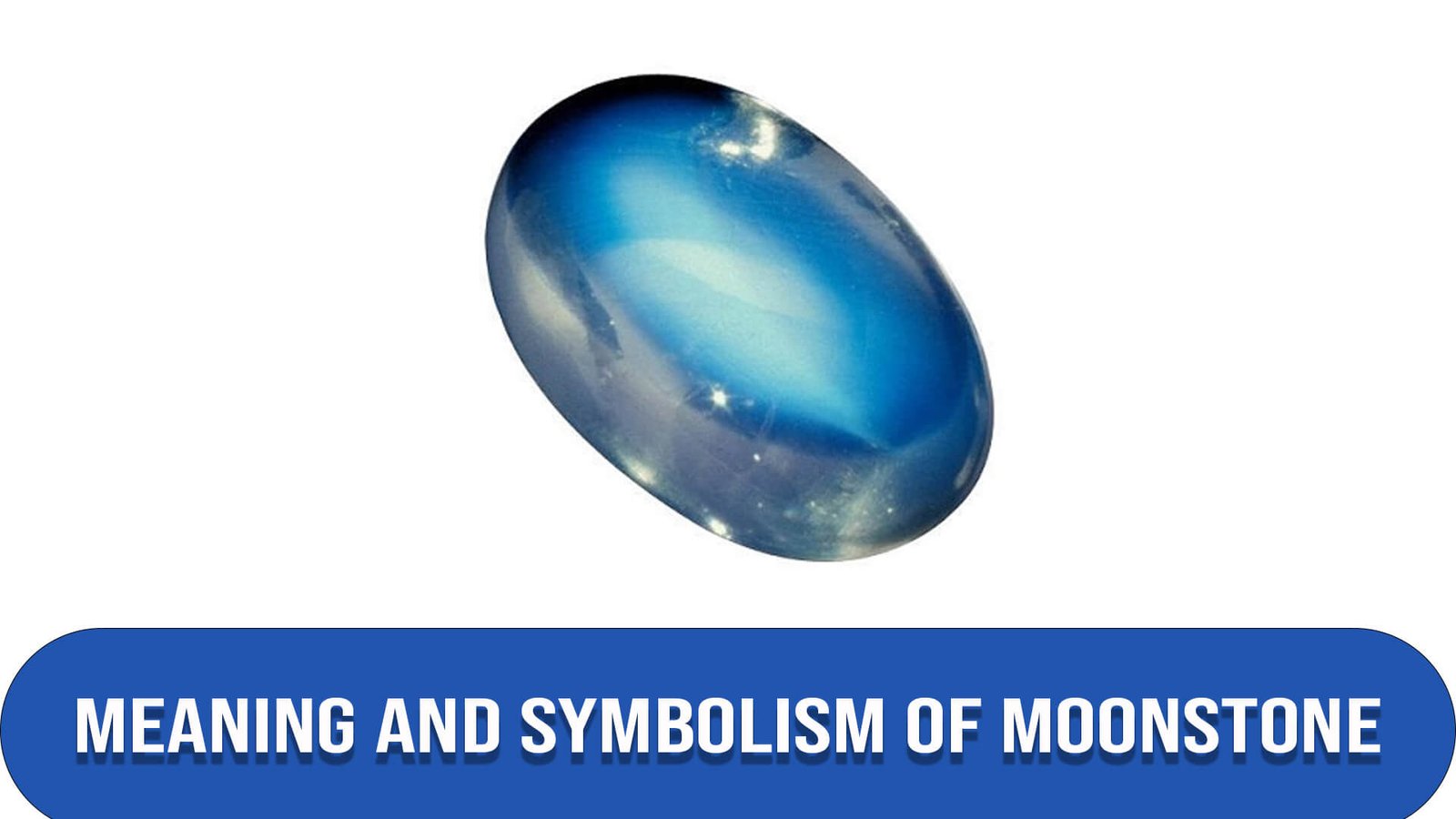
The birthstone of June, moonstone is famous for its appeal and symbolism as well as deep meaning. This stone has a deep connection to the energy of the moon and carries the sense of wonder with it.
Among the famous symbols is that this stone is linked to the divine feminine life cycle. This stone shows reflection of the changes in one’s life as the moon waxes and wanes. Also, this stone is useful in boosting abilities, mentality, and intuition, so it helps people enhance their inner wisdom and move along the changing waves of life. Moonstone is regarded as the stone that boosts fertility, balance, harmony, and emotional well-being for women.
The ethereal glow of this stone is called adularescence which enhances symbolism. The shimmering look of light in the stone symbolises moonlight falling on the calming water and enhances the sense of serenity. This stone is useful in emotional healing, enhancing comfort and decreasing stress or emotional stress.
In different cultures, this stone has a strong link with spiritual significance and is connected with dreams and visions. Moonstone is believed to boost spirituality, intuitions and connection to high realms. Commonly this stone is used in medicines and helps a person to explore inner self.
Moonstone has a strong connection with love and romance so it symbolises passion, boosts harmony and emotional stability among relationships. Due to the gentle powers of this stone, it can enhance understanding and sympathy which then boost communication and connections.
The Symbolism of Moonstone Birthstone:
Moonstone symbolizes femininity, creativity, emotional well being, spirituality and cyclic life nature. This gemstone allows us to explore the mysteries of the moon, put our wisdom and go along the transformative path of self exploration. As it is the birthstone of June, it reminds us about beauty and power.
Properties of Moonstone
According to different physical characteristics of this gemstone, it attracts the attention of people as it is rare. It belongs to the albite and orthoclase group. The luster of this gemstone is pearly and embraces a unique adularescence which is the play of the moonlight on the water by feldspar layers. With passing the light from this stone and production of ethereal shine, it becomes translucent or semi transparent.
The color of this stone may vary based on purity and ranges from milky white to grey to peach to blue. On the Mohs hardness scale, it has hardness of 6 and 6.5 which make it at high risk of scratching. However it is an alluring gemstone with unique charm.
Color of Moonstone
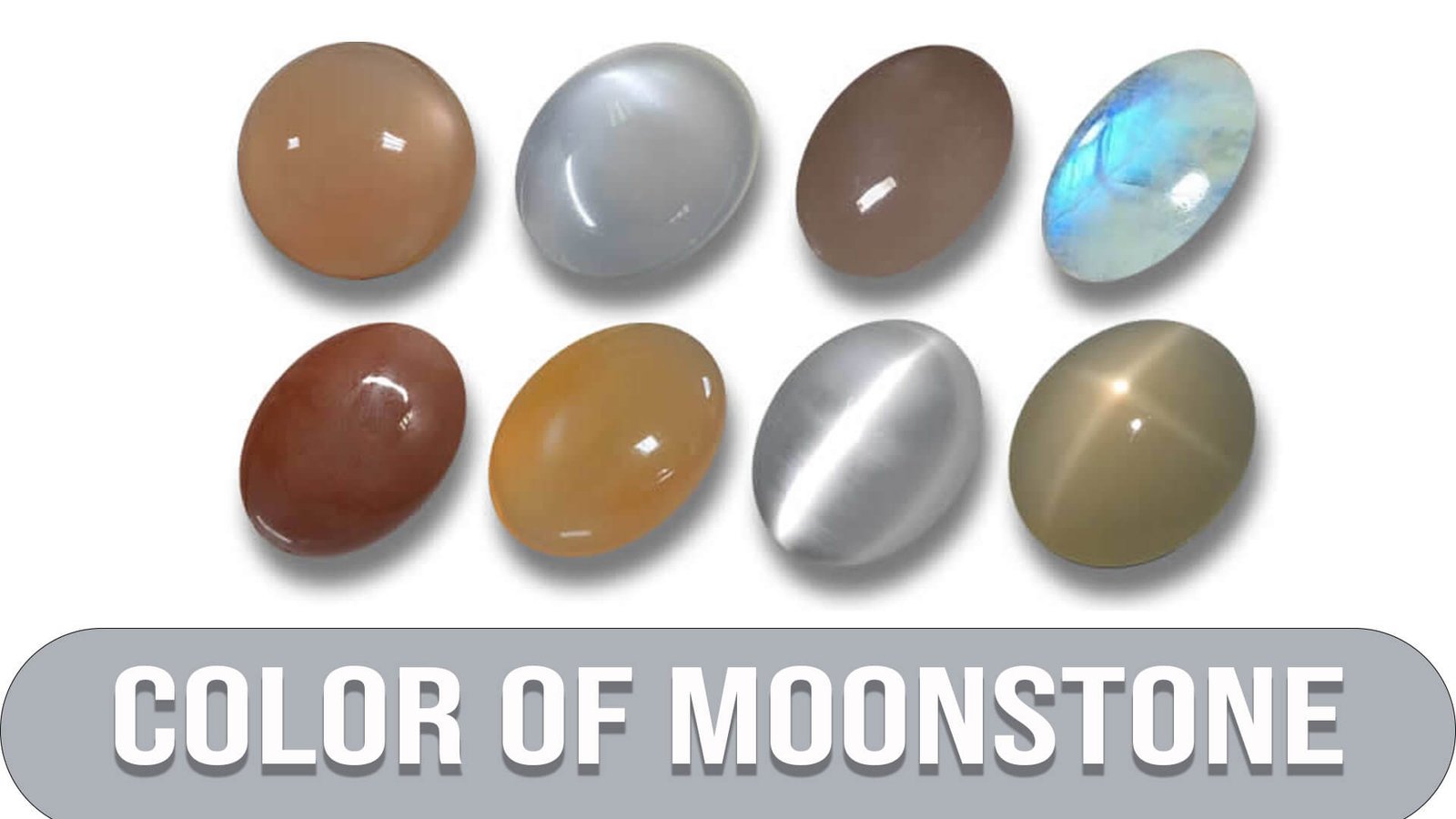
Ethereal moonstone is the most appealing stone with a soft and milky appearance as well as shine that resembles the shine of the moonlight on water. This stone is also famous for its dreamy glow and is available in peach, grey, white and other shades that embrace the allure of the moon’s radiant glow. There are many other colors found in moonstone color but you can even customize it according to your desire. There are many colors found in the Moonstone birthstone that can even be customized by the customer demand.
Moonstone Jewelry
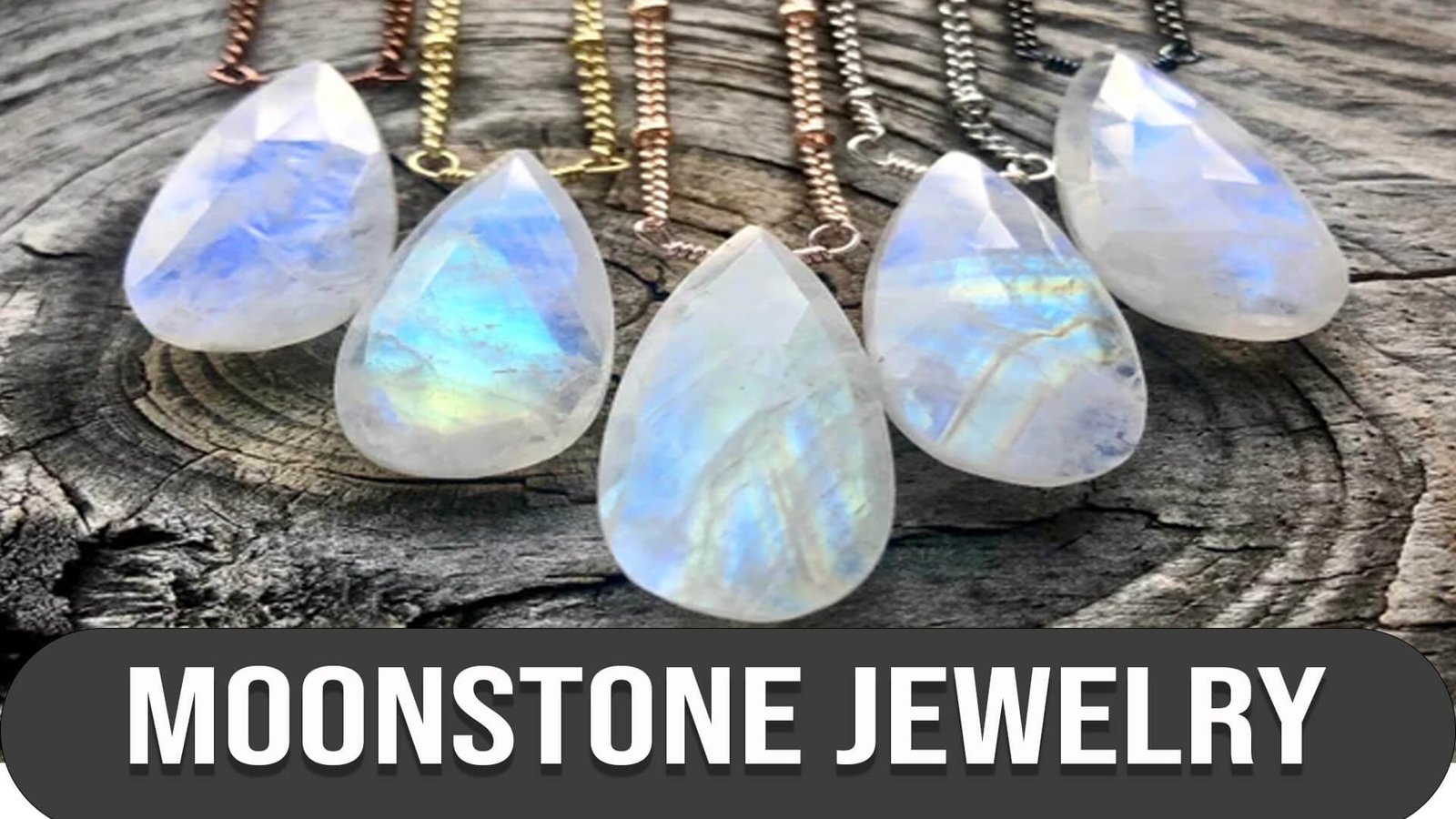
The moonstone is a rather unique and uncommon gem. When this stone is being prepared for use in Jewelry, it is often polished into a smooth, rounded shape known as a cabochon. This particular cut doesn’t feature facets like traditional gem cuts, giving the moonstone a distinctive appearance. Thanks to its ethereal and mysterious sheen, the moonstone is a popular choice for a variety of Jewellery pieces.
From elegant pendants and delicate earrings to stunning rings, graceful bracelets, and timeless necklaces, the moonstone can be used to create a wide range of beautiful adornments. Additionally, it can also be used in stick pins to add a touch of refined elegance to any outfit. The moonstone’s unique play of light and enchanting glow make it a versatile and captivating gemstone for crafting all sorts of stunning Jewelry pieces.
Moonstone Care and Cleaning
Moonstone has little toughness. When subjected to intense heat, it could crack. Therefore, you shouldn’t use an ultrasonic or steam cleaner to clean your moonstone. Cleansing is best done with warm, soapy water and a soft brush.
Cost of Moonstone
The average cost of moonstone may vary based on quality, cut, appeal and size of the stone. The common price range of this stone is $10 to $100 per carat. However the stones with high clarity, large size, vibrant colours and rarity come in a high price range. Remember that the price of the gemstone may change with time because of supply and demand. Ensure to consult the reliable dealer to get the proper information about moonstone pricing.
Conclusion:
It is concluded that the gemstone of June month comes with high importance and beauty that appeal to the people born in this month. Each June gemstone has unique features and symbols, whether in the form of the charm of pearl or the mesmerising colors of Alexandrite and Moonstone. June birthstones are considered as the better luck and personal style as well as for protection and emotional well-being.
These stones remind us about the warm embrace, love, marriage and the start of summer. By having the pearl birthstone month, we can embrace the richness these stones bring to lives and also celebrate diversity. All of these variations of June birthstone have their own characteristics and properties which you can avail according to your choice!
Read More: January Birthstone, Febuary Birthstone, March Birthstone, April Birthstone, May Birthstone, July Birthstone, August Birthstone, September Birthstone, October Birthstone, November Birthstone, December Birthstone
